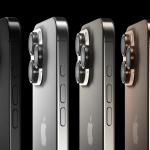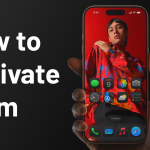AT&T Device Unlock: Bridging the Gap Between Carriers and Consumers

In a day and age when mobile connectivity has become more important than ever, allowing the devices to be unlocked from those network restrictions is a necessary step towards greater consumer empowerment. That is the transition AT&T has made in its unlocking process: allowing the user to select their carrier, further realizing the increase in value and utility of their mobile device in the aggregate. This benefits the consumer by empowering him by giving him control over the device and encouraging a competitive environment between carriers. If the path for a direct unlock has hurdles, they must be jumped by either the third party or the alternative services that reach out to bridge the gap to ensure that the device’s path toward freedom remains open.
The Role of AT&T Device Unlock
AT&T’s device liberation process is consumer-friendly, allowing users to free their devices from the AT&T network. This would particularly be welcome to those contemplating changing to another service provider that more befittingly suits their requirements, either in better coverage, more attractive pricing, or better customer service. Moreover, with unlocked devices, people can insert international SIM cards from other countries. Hence, it is very favorable for travelers who would have otherwise wanted to avoid high roaming fees at all costs.
Enhancing Consumer Choice and Flexibility
The AT&T unlock code process’s primary advantage is its enhanced choice and flexibility. This would free the consumer from long-term contracts, as they would shop from plan to plan at will, depending on their changing needs and lifestyles. This is not necessarily tied to staying in service within the limits of only one carrier’s coverage. This level of flexibility is one of the very important points, especially in a world where switching easily from carriers will accrue great savings and convenience.
Third-Party and Alternate Unlock Services
However, none of them come across clear ways to follow the official process in light of unlocked devices. Some may not meet the unlocked criteria of AT&T, while others could experience delays or even bureaucratic red tape. This is precisely where the alternative services of unlocking come in. These offer invaluable alternatives for subscribers who could not unlock their handsets through AT&T; they provide a quick and instant remedy for overcoming carrier limitations. However, consumers are advised to be very cautious with this kind of service and deal only with the most reliable suppliers to avoid fraud, which could damage the device.
Bridging the Gap
That is where the official AT&T unlock process, and third-party services come in: to federate carriers with the consumers, crumbling the walls between devices that keep them from being more fluid. This way, the user is in control again in any way that would serve their best individual interests—ultimately yielding a more consumer-centric mobile ecosystem. Surely, this would make better consumer satisfaction that encourages carriers to move forward in improving their services while competing with issues other than just locking down to the network.
Conclusion
Together, the AT&T Mobile Unlock initiative and other unlocking vendors act in such a way as to give an even larger movement within the mobile industry to empower consumer autonomy. This evolution to ever greater freedom and choice does mirror the changing dynamics between carriers and customers—increasingly, at this point, in control of their mobile experience. These trends further democratize mobile connectivity, ensuring, in the end, that consumers always have the option and ability to select the best carrier for their needs without undue impediment in the form of restrictions.
Check out our popular Unlocking services at CellUnlocker
- Unlock iPhone – All Models
- Unlock Samsung Devices by Unlock Code
- Unlock T-Mobile Devices with the Unlock App
- Unlock majority of Cricket Phones
- Unlock All ATT Networks and Models: Unlock ATT
- Unlock Samsung Google/FRP Account Removal
- Unlock Google Pixel/FRP Account Removal
AT&T Latest updates
- 2024: AT&T Bargaining: Updates on Labor Negotiations with the CWA: AT&T has reached agreements on one-year extensions of two Mobility contracts with the Communications Workers of America and is continuing constructive negotiations for a new agreement.
- 2024: AT&T Outlines Plan for Sustainable Growth & Shareholder Returns: AT&T announced a multi-year strategic plan for sustainable growth, including continued profitable 5G and fiber subscriber growth, and plans to return over $40 billion to shareholders through dividends and share repurchases.
- 2024: AT&T Will Pay $13 Million In FCC Settlement Over Third-Party Breach: AT&T agreed to pay $13 million as part of a settlement with the FCC over a 2013 cloud breach of a third-party vendor that exposed data from 8.9 million customers.




